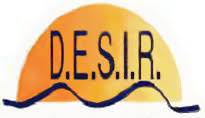Hip Pain Associated with Acetabular Dysplasia in Patients with Suspected Axial Spondyloarthritis: DESIR Cohort Data
Résumé
Objectives: To determine whether acetabular dysplasia is associated with hip pain at physical examination among adults with recent-onset inflammatory back pain (IBP) suggesting axial spondyloarthritis (axSpA).
Methods:This cross-sectional ancillary study was conducted on the prospective DESIR cohort, which enrolled patients aged 18-50 years who had recent-onset IBP. Two readers used antero-posterior pelvic radiographs to assess the Tönnis angle, acetabular angle (AA), lateral centre-edge angle (LCEA), and femoral head extrusion index (FHEI). Abnormality of one or more of these four variables defined acetabular dysplasia. Hip pain upon physical examination was assessed based on Ritchie's articular index.
Results:The overall prevalence of acetabular dysplasia was 22% (139/636). The proportion of females was higher in the group with acetabular dysplasia. Hip pain was found in 21% (29/139) of patients with versus 12% (59/497) without acetabular dysplasia (OR, 1.96; 95% CI, 1.20 to 3.20); the association was significant in males (OR, 3.14; 95% CI, 1.44 to 6.86) but not females (OR, 1.39; 95% CI, 0.74 to 2.62). Results were similar when acetabular dysplasia was defined on the basis of LCEA alone (OR, 2.15; 95% CI, 1.18 to 2.62).
Conclusion:Among patients with recent-onset IBP suggesting axSpA, acetabular dysplasia was significantly associated with hip pain in males. Hip pain related to acetabular dysplasia might result in overdiagnosis of hip involvement by axSpA.
Domaines
Sciences du Vivant [q-bio]| Origine | Publication financée par une institution |
|---|---|
| licence |


